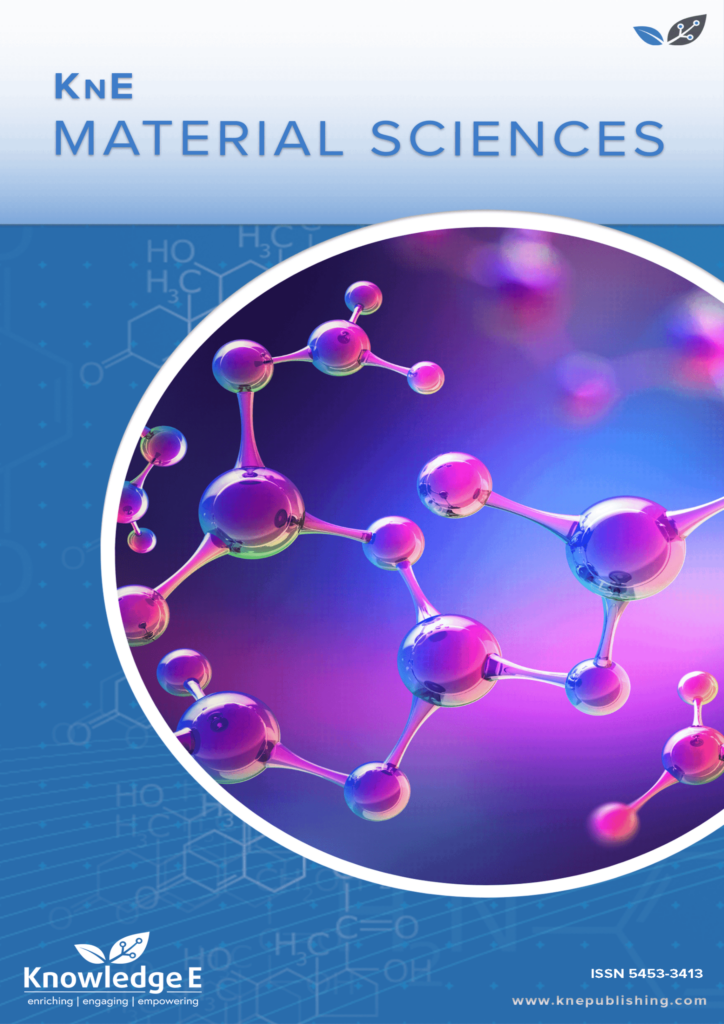
KnE Materials Science
ISSN: 2519-1438
The latest conference proceedings on physical materials, energy materials, electrical materials.
Efficient Recovery of Lignin and Hemicelluloses from Kraft Black Liquor
Published date: Aug 10 2022
Journal Title: KnE Materials Science
Issue title: 1st International FibEnTech Congress (FibEnTech21) – New Opportunities for Fibrous Materials in the Ecological Transition
Pages: 1–7
Authors:
Abstract:
Black liquor (BL) from kraft pulping industries contains a large fraction of lignin and hemicelluloses and their efficient separation can open up new possibilities for integrated biorefineries. In this work, lignin and hemicelluloses were separated from BL and concentrated BL (obtained by ultrafiltration), by precipitation using acidification and antisolvent precipitation method, respectively. For lignin precipitation, different organic acids, namely acetic, lactic and citric acid, were used and the yield and purity of the extracted lignin were compared with the lignin precipitated using inorganic acids, namely sulphuric and phosphoric acid. Among the organic acids, the highest yield of lignin (57.2%) was obtained by lactic acid, but the extract also contained the highest levels of inorganic impurities (9.2%). The extract obtained from acetic acid contained lower inorganic impurities and the lignin yield was 48.1%. The hemicellulose was extracted from BL liquor that was concentrated using the ZnObased PES mixed matrix ultrafiltration membrane, which was started by first separating lignin (at pH 3.5, 4 and 4.5) from it. The supernatants from the lignin precipitation process were used as a source of hemicellulose and this was precipitated by using acetone as an antisolvent. The highest hemicellulose yield (54.4%) was obtained from the supernatant with the lowest lignin content and highest acetone to supernatant ratio.
Keywords: acidification, antisolvent precipitation, hemicelluloses, kraft black liquor, lignin
References:
[1] Özdenkçi K, de Blasio C, Muddassar HR et al. A novel biorefinery integration concept for lignocellulosic biomass. Energy Conversion and Management. 2017;149:974–987. https://doi.org/10.1016/j.enconman.2017.04.034
[2] Hubbe MA, Alén R, Paleologou M, Kannangara, Kihlman J. Recovery from spent alkaline pulping liquors using acidification, membrane separation, and related processing steps: A review. Bioresources. 2019;14:2300–2351.
[3] Manorma, Ferreira I, Alves P, Gil MH, Gando-Ferreira LM. Lignin separation from black liquor by mixed matrix polysulfone nanofiltration membrane filled with multiwalled carbon nanotubes, Separation and Purification Technology. 2021;260. https://doi.org/10.1016/j.seppur.2020.118231
[4] Kevlich NS, Shofner ML, Nair S. Membranes for kraft black liquor concentration and chemical recovery: Current progress, challenges, and opportunities. Separation Science and Technology. 2017;52:1070–1094. https://doi.org/10.1080/01496395.2017.1279180
[5] da Silva SHF, Gordobil O, Labidi J. Organic acids as a greener alternative for the precipitation of hardwood kraft lignins from the industrial black liquor. International Journal of Biological Macromolecules. 2020;142:583–591. https://doi.org/10.1016/j.ijbiomac.2019.09.133
[6] Al-Rudainy B, Galbe M, Schagerlöf H, Wallberg O. Antisolvent precipitation of hemicelluloses, lignosulfonates and their complexes from ultrafiltrated spent sulfite liquor (SSL). Holzforschung. 2018;72:839–850. https://doi.org/10.1515/hf-2017-0218
[7] Ren H, Omori S. Comparison of hemicelluloses isolated from soda cooking black liquor with commercial and bacterial xylan. Cellulose Chemistry and Technology. 2014;48:675–681.
[8] M. Sharma, P. Alves, M.H. Gil, L.M. Gando-Ferreira, Fractionation of black liquor using ZnO nanoparticles/PES ultrafiltration membranes: Effect of operating variables, Journal of Cleaner Production 345 (2022) 131183. doi:10.1016/j.jclepro.2022.131183.